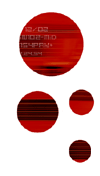

 |
 |
scientific program electroacoustic musics around set theory music analysis tools musicnetwork workshop professional week ircam forum workshops free software for music international multichannel sound forum performing arts and technologies dance and new technologies access to sound heritage thematic evenings demonstration stands artistic program set theory concert music in creation concert cursus concerts opera "one" sound installations open house weekend technologies gallery conferences demonstrations workshop-performances workshops and films ircam laboratories linux install-party concert distribution on internet associated events resonances night at glaz'art émilie simon at la cigale suguru goto reseaunances guided tours of ircam and the multimedia library resonances in pictures resonances 2002 
|
F. DELALANDE, P. COUPRIE, D. LEQUETTESpace TranscriptionAbstractGeometric space has become an important item for composers notably in the field of electroacoustics, the notion is relevant regarding reception, yet it is difficult to transcribe, thus to analyze. Three key points will be adressed here :
This presentation benefits from several works which were discussed in the GRM seminars on music analysis. The reflection on analysis is presented by François Delalande, the multimedia works were developped by Pierre Couprie and Daniel Lequette. Biography of François Delalande |
|||||||||||||||||||||||||||||||
 |
Organization Committee Copyright Ircam-Centre Pompidou 2003 |